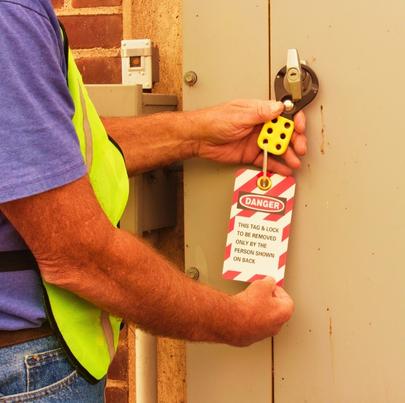Lockout-tagout mistakes with powered equipment can result in serious injuries, including serious fractures, amputations or death. Employers are responsible for making sure that all workers understand the lockout/tagout procedures for any equipment that they are locking out or is in their work area. However, mistakes still occur because of failure to test controls, workers not following safety procedures and human error.

Failure to Test Controls
When time is limited, a repairman could start a repair on a machine that has been previously locked out without testing the controls himself to determine if they are inoperative. Authorized workers should always confirm that equipment controls are responsive before they begin any service or maintenance activities. This includes being able to shut the machine down and then disconnect and isolate it from its power source, whether the source is electrical, gas, mechanical, pneumatic or hydraulic.
Safety Procedures Not Followed
Employers should provide and enforce specific safety procedures for each piece of powered equipment. It is the responsibility of each worker to review and follow these procedures before servicing equipment. Training and refreshers should be provided by employers on a regular basis to confirm that proper procedures are being followed. Spot inspections and year safety audits should be included in employers’ monitoring processes.
Workers should:
- Be assigned separate locks with their names or photos
- Never be assigned duplicate keys
- Never ask a fellow worker to do their lockout
Human Error
Many work injuries from lockouts-tagouts can be attributed to human error. A worker might choose to do a quick fix thinking that a lockout-tagout is not needed. Or a worker might do the lockout but forget to test controls because they are in a hurry.
Fatigue or impairment on the job can increase the risk of workers making mistakes that could injure not only themselves but other workers. But another type of fatigue, decision fatigue can also lead to making errors in judgment. This can happen when workers are required to make many decisions and sometimes take short-cuts or more risks when rushed.
While it might not be possible to slow work processes down or decrease the number of decisions workers need to make every day, lockout-tagout safety procedures should be made into a habit. This removes the need for workers to make a quick decision to skip on safety that could cost them a limb or their lives.







